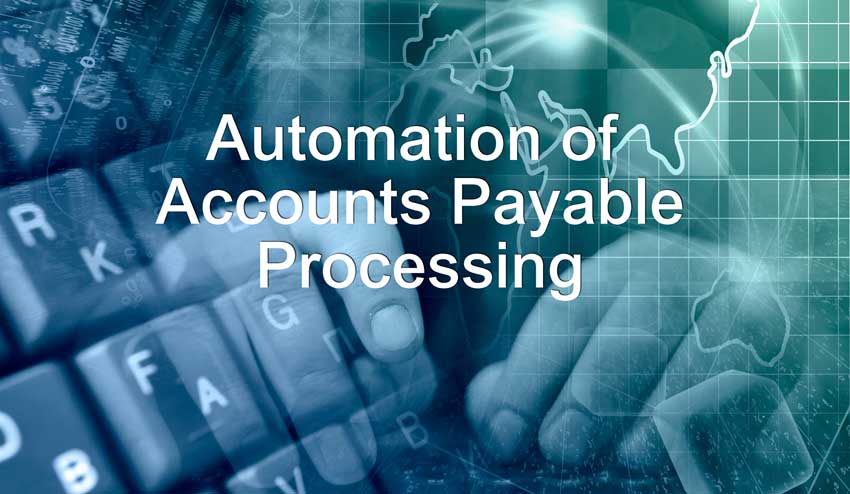New Approach for Capture and Recognition
Taking a new approach to data capture is essential to support Accounts Payable (A/P) processes that depend on data from documents such as invoices, purchase orders, contracts and receipts. In a typical large-scale A/P workflow, three major pain points exist that could benefit greatly from a new automated approach:
- Manual sorting volumes of incoming invoices and other documents that prevents efficient coordination;
- Keying in the data from incoming documents into the Accounting system, which is slow and error prone; and
- Informal, uncodified communication process and workflow so that information validation and approvals take longer. On occasion, documents get misplaced or lost.
Processing high volumes of invoices—purchase orders, requisition, goods and services receipts—can become an extremely expensive process. If accomplished by manual processing, these processes must be duplicated many times each day. This is coupled with the fact that across industries, there’s a 5-7 percent error rate for manual data entry, makes the decision to automate that much easier. Fortunately, when businesses have repeatable processes that are done all the time, they can usually be automated. A/P has a methodical set of processes and predictable workflow that lend itself to automation—especially for the most rote tasks.
In today’s fast-paced, document-rich environment, more and more service providers find the need to perform document classification and data extraction, either as a value-add service to end users or as a critical part of their primary managed business service offerings. The right automation approach for organizations on average cuts their manual processing costs by 50 percent. Each approach differs somewhat depending on the accuracy requirements and also requires laying the necessary groundwork.
For most organizations, Return On Investment (ROI) is likely within 9-15 months. General benefits of automation are: increased processing rates, reduced errors and the ability to more easily share data across the organization. Multiple employees are simultaneously accessing the same document and analyzing different data at once.
Laying the Groundwork for Successful Automation
First, it’s important to quantify the existing cost per transaction to determine the best automation approach for the given organization. The cost should factor in all the relevant A/P costs, the hidden costs such as management overhead, data validation and costs of errors to the organization down the line.
Once the costs are clear, setting the level of automation is next. Initially, automating a small part of the process is advised. Every document processing automation approach will require both computers and the human touch. The workflow has three basic steps:
- Via email, fax and hard copy, documents are submitted and classified as part of the A/P process.
- Required data must be automatically located and extracted from these documents.
- Challenging data, that is, any required data not able to be located or any data that falls below a certain confidence threshold is routed to an employee for data entry and correction.
Underneath this basic workflow automation—when done right—are sophisticated algorithms and machine learning techniques employed to accurately extract data from different documents with varied content. These automatically learn from user input without special user-created rules.
Even with the advent of machine learning, automated approaches require initial fine-tuning. The organization must analyze the accuracy of their data extraction software (not simply OCR), so that the human-centered data entry/correction function is doing the right amount of validation to ensure the necessary accuracy. This means neither too much checking because validating all the data manually is costly nor too little checking. The A/P team must have reliable data in their system.
Leveraging Advanced Data Extraction
The process of locating and extracting data from documents in a reliable and accurate manner is much more than just adopting any capture tool to automate A/P processing. Here, understanding the types of documents is critical. Invoices tend to be much more structured than receipts or contracts.
Next understanding the data that the A/P team needs in detail will provide sufficient context to aid with automating validation of potential answers. Knowing what data must be extracted, and the range of what each field will contain will help ensure the proper parameters are set and that the results will need less human validation to ensure that they are accurate.
Lastly, it’s essential to examine what the existing manual data entry error rates are and what accuracy rates are required going forward to ensure successful automation. This involves collecting a representative number of sample documents and the accurate data extracted from them so that together these can be used as a benchmark to measure output of the system with what output is required going forward. This output comparison can be used to tune the system in order to establish the “breakpoint” at which data requires additional validation.
This automation approach requires initial planning and analysis to quantify how much transaction processing (with manual data entry) currently costs the organization and to determine the existing levels of data accuracy. That way, the groundwork is laid in order to establish higher levels of data quality with lower costs through any new automation initiative. Starting small to refine the automation process moves the organization toward new levels of accuracy and lowered costs with less risk and little financial investment.




